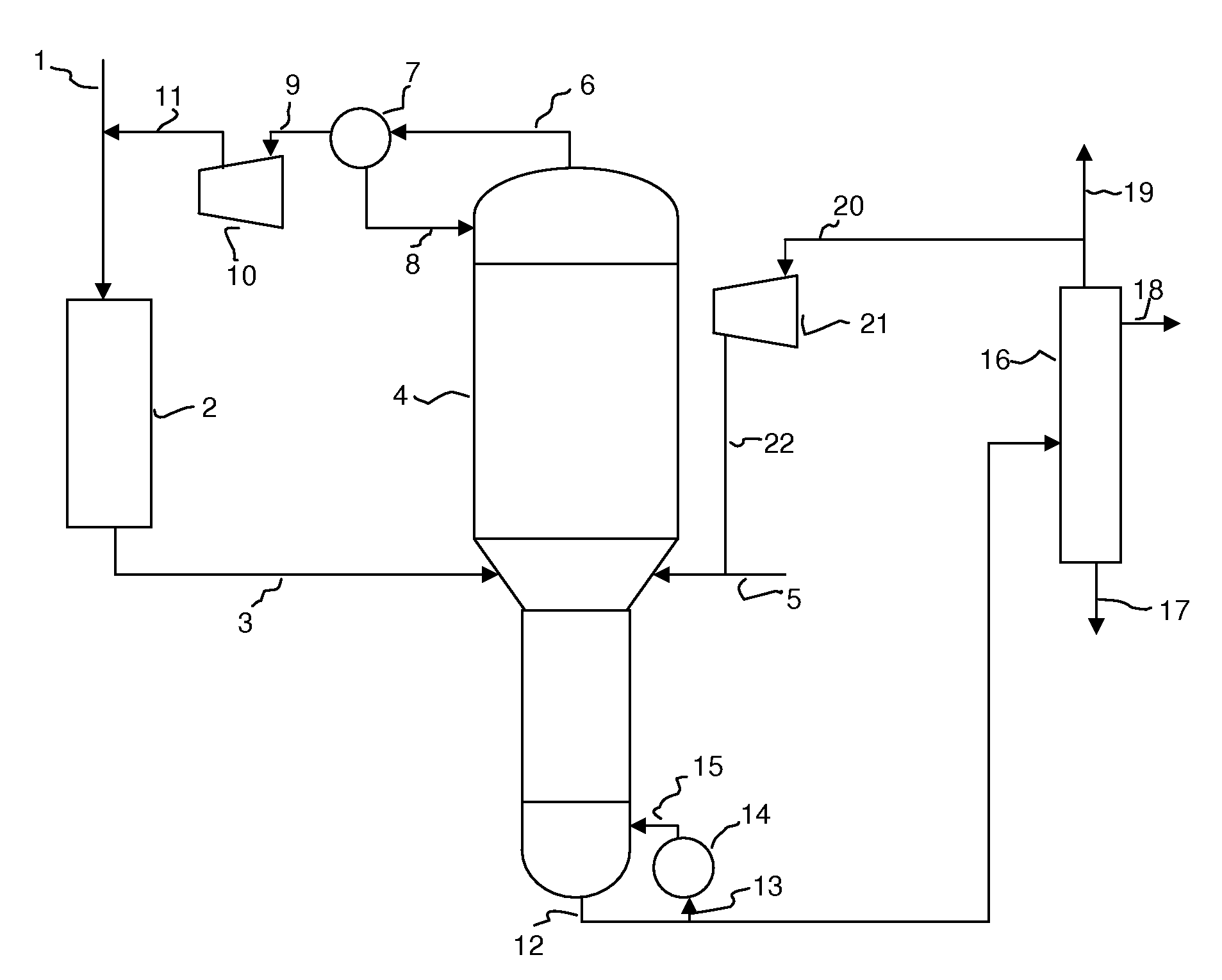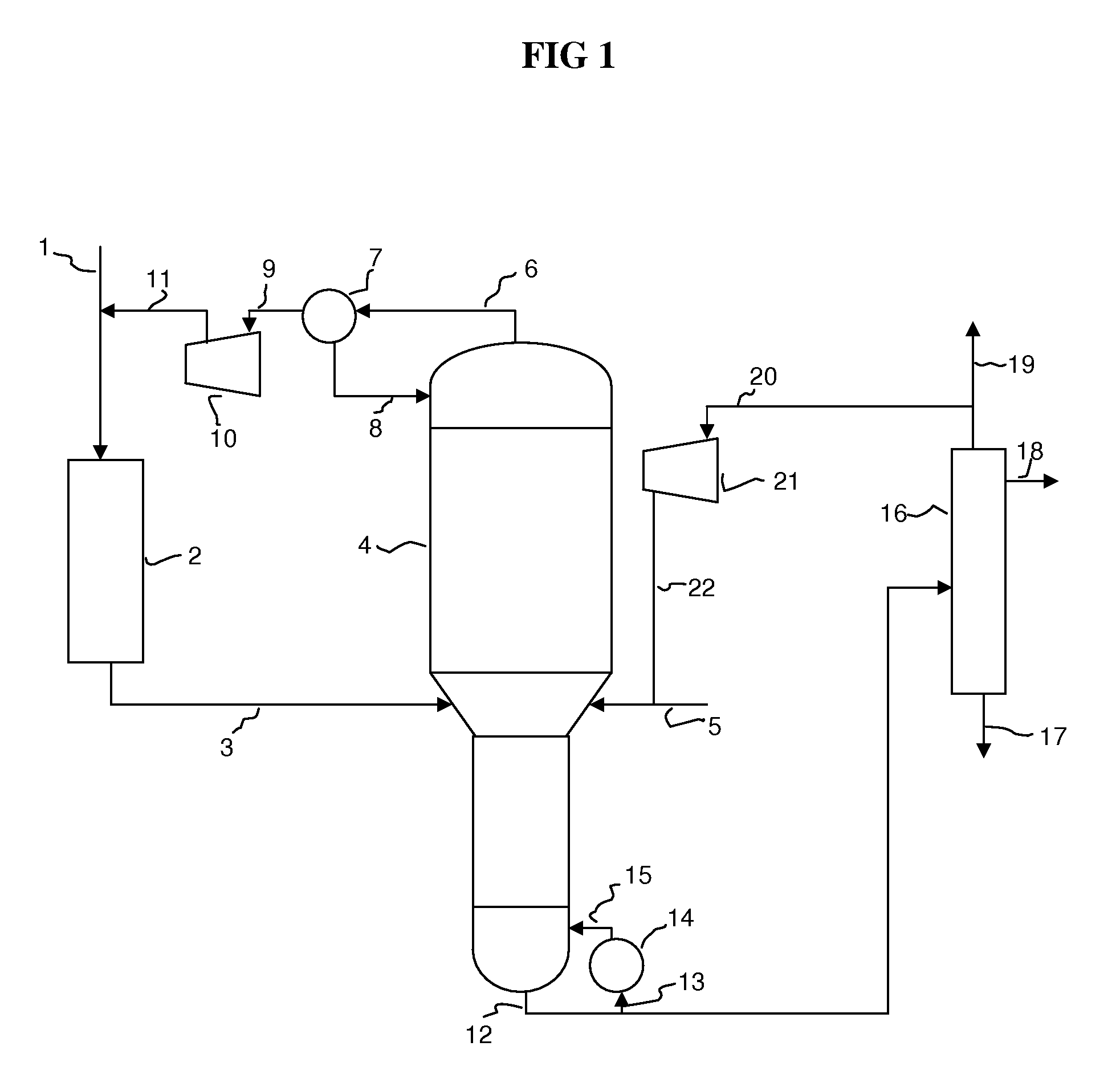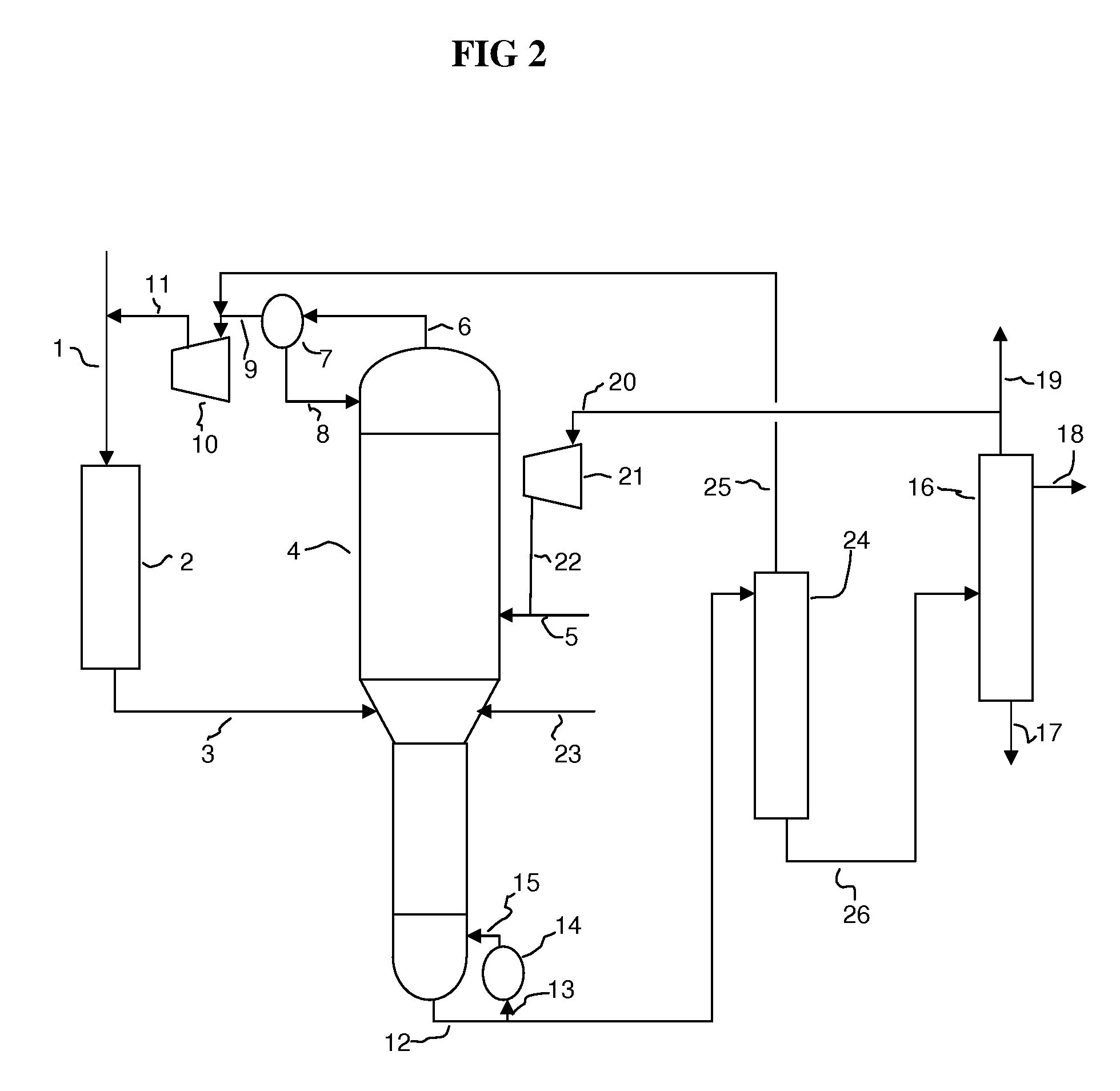Integrated hydro-oxidation process with separation of an olefin oxide product stream
a technology of olefin oxide and hydro-oxidation process, which is applied in the direction of climate sustainability, bulk chemical production, organic chemistry, etc., can solve the problems of increasing capital investment and operating costs, unacceptably large temperature cycle, and large energy input of the stripper column, so as to improve the separation of the hydro-oxidation effluent stream, avoid any temperature cycle, and maximize productivity
- Summary
- Abstract
- Description
- Claims
- Application Information
AI Technical Summary
Benefits of technology
Problems solved by technology
Method used
Image
Examples
example 1
[0072]With reference to FIG. 1 and Table 1, a catalyst (61,800 kg) comprising gold deposited on a microporous titanosilicate support is prepared in accordance with the description in U.S. Pat. No. 6,255,499 and then loaded into a fixed-bed, continuous flow reactor (137 m3 volume). (FIG. 1, unit 2) The catalyst is employed in a hydro-oxidation of propylene with oxygen in the presence of hydrogen to form propylene oxide and co-product water. A flow of hydrogen (10 percent by volume in nitrogen) is started. The reactor is heated from room temperature to 250° C. at a rate of 120° C. / hour, held at 250° C. for 1 hour, and then cooled to 100° C. The reactor is then fed with nitrogen, heated to 160° C., and held for 1 hour. Thereafter, the temperature is reduced to 140° C., and then a feed comprising propylene, oxygen, and hydrogen is introduced (FIG. 1, input stream 1) The process temperature is maintained at 160° C. and the process pressure is maintained at 289-302 psia (1992−2082 kPa) th...
example 2
[0077]With reference to FIG. 2 and Table 2, Example 1 is repeated with the exception that in place of a liquid propylene reflux, n-butane is fed to the external condenser (7) to yield a liquid butane reflux (8) for first distillation column (4), and stripper column (24) is placed between the first distillation column (4) and the finishing train (16). In the hydro-oxidation step the selectivity to propylene oxide is 96.9 mole percent, based on moles of propylene converted. The molar ratio of water to propylene oxide in the hydro-oxidation effluent stream is 4.3 / 1. The first hydro-oxidation effluent stream (3) is fed to first distillation column (4) using the butane rectification agent. A first overhead stream (6) comprising propylene, oxygen, hydrogen, butane, and various inert diluents, obtained from the first distillation column (4), is fed to the condenser (7) and split into a liquid butane stream (8), which is recycled to the distillation column for use as rectification agent, an...
PUM
| Property | Measurement | Unit |
|---|---|---|
| pressure | aaaaa | aaaaa |
| temperature | aaaaa | aaaaa |
| temperature | aaaaa | aaaaa |
Abstract
Description
Claims
Application Information
 Login to View More
Login to View More - R&D
- Intellectual Property
- Life Sciences
- Materials
- Tech Scout
- Unparalleled Data Quality
- Higher Quality Content
- 60% Fewer Hallucinations
Browse by: Latest US Patents, China's latest patents, Technical Efficacy Thesaurus, Application Domain, Technology Topic, Popular Technical Reports.
© 2025 PatSnap. All rights reserved.Legal|Privacy policy|Modern Slavery Act Transparency Statement|Sitemap|About US| Contact US: help@patsnap.com



